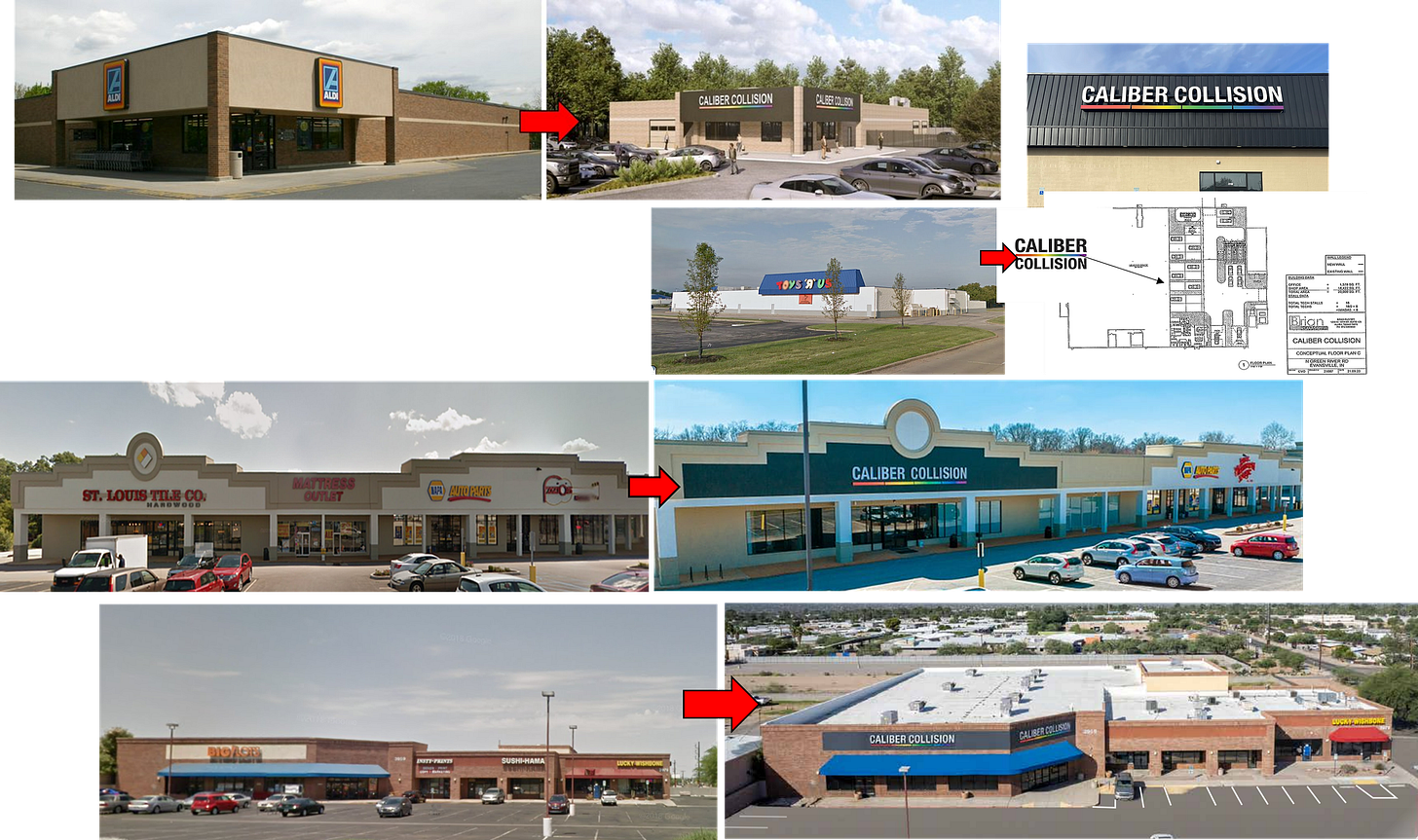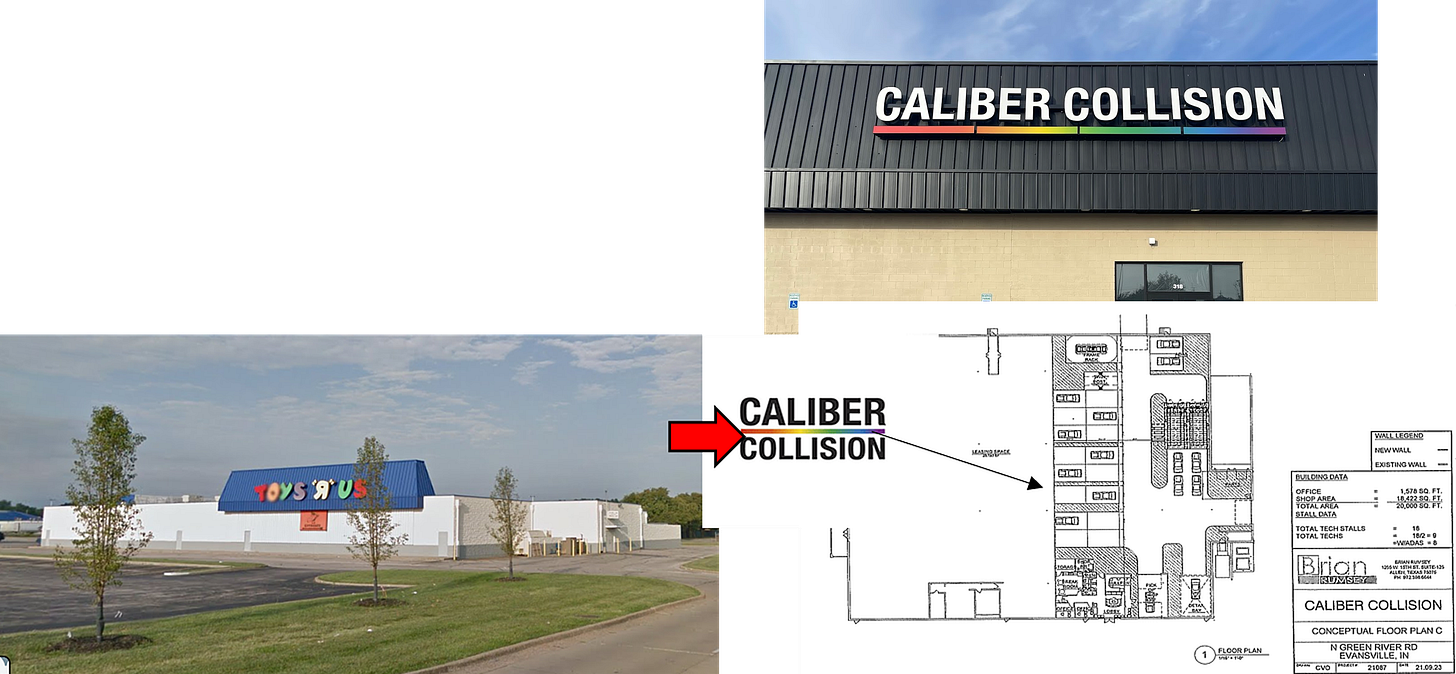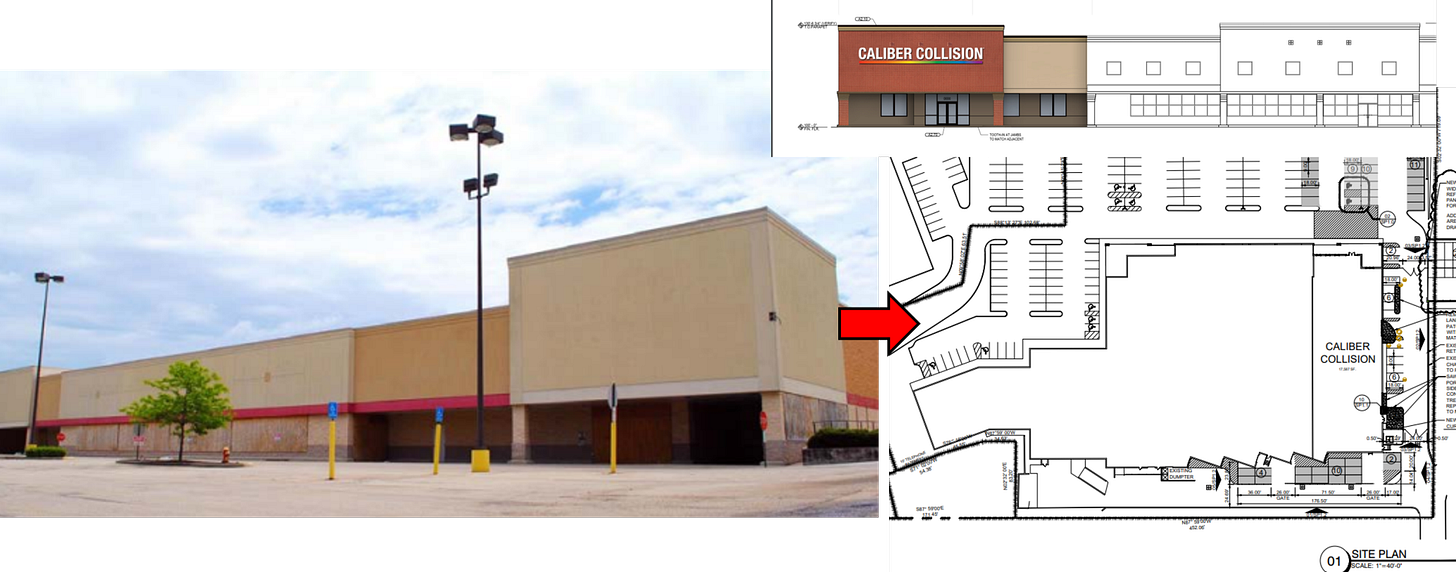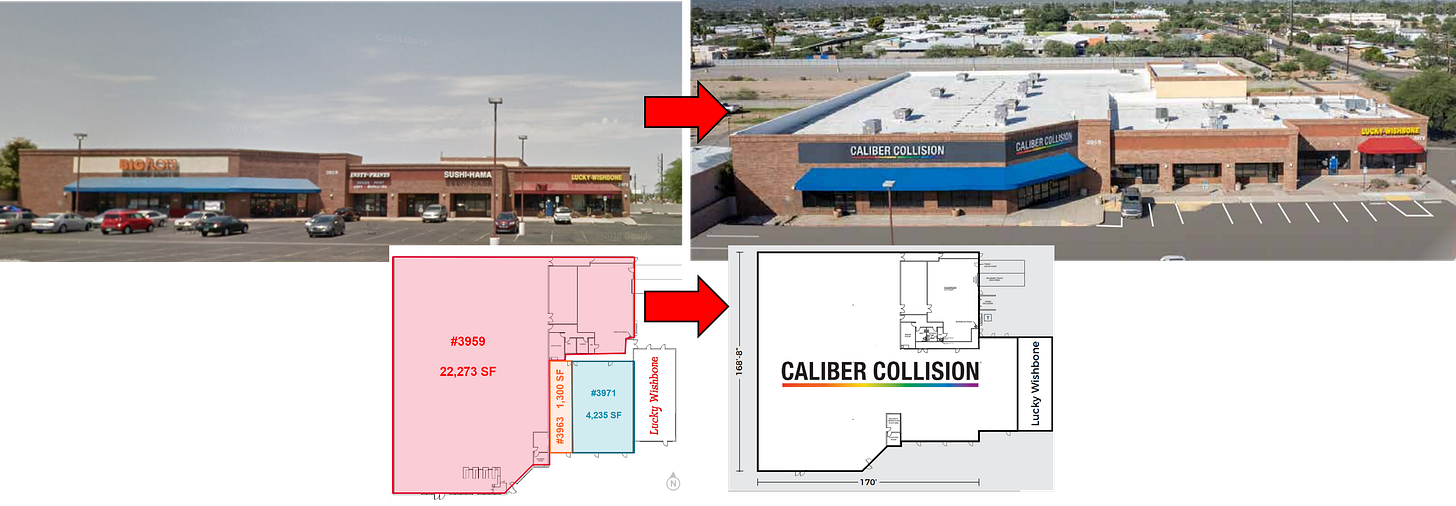How Caliber Collision Is Adding Sites Via Adaptive Reuse of Retail Real Estate
Many new Caliber Collision centers have been developed via the adaptive reuse of former grocery stores, Big Box retail buildings and shopping centers
In 2023 ALDI vacated its 14,000 square foot freestanding grocery store in Bethlehem, Pennsylvania and relocated to a larger space in a nearby shopping center.
The freestanding former ALDI building did not remain vacant for long — but its new user is not another grocer or retailer.
Instead it has been repurposed for auto body and glass repair by Caliber Collision.
And it is just the latest of Caliber’s many adaptive reuses of retail buildings.
Caliber Collision has tripled its number of collision centers over the past six years, from 600 as of mid-2018 to over 1,800 across 41 states as of September 2024.
While Caliber has added sites by acquiring existing collision centers, new “greenfield” sites are also a significant growth driver for the Company.
For instance, roughly 1/2 of Caliber Collision’s 150 unit openings in 2023 were newly established centers.
These brand new facilities required real estate, much of which was sourced from existing buildings rather than new ground up construction.
Caliber found that retail buildings in particular proved to be good real estate for a collision center use.
For instance, earlier this year Caliber Collision opened a new collision center in 20,000 square feet of a former Toys R Us store in Evansville, Indiana.
Caliber's adaptive reuse projects have not been limited to vacant Big Box buildings.
It has also redeveloped large portions of shopping centers into new collision centers.
For instance, Caliber took over a former tile shop and mattress outlet at the Ellisville Shops in Ellisville, Missouri.
It now serves as a new “anchor” of the 38,000 square foot suburban shopping center.
Caliber also converted a former Biggs Grocery store at the Crossing of Colerain Shopping Center in Cincinnati into a collision repair center.
Crossing of Colerain was ~10% occupied when acquired by current ownership in 2015.
But Caliber Collision and a couple of other tenants absorbed the ~70,000 square foot former grocery space and the center — with Caliber as the new primary anchor — is now 100% occupied.
And one of Caliber’s newest locations is slated to open later this year in a former Big Lots store that anchored a small shopping center in Tucson, Arizona.
Caliber Collision is not only occupying the former ~22,000 square foot Big Lots anchor suite but also ~5,000 square feet of vacant small shop space.
Once it opens it will share the center with a single remaining co-tenant — one of the seven Lucky Wishbone restaurants that dot the Tucson market.
To be sure there have been challenges in putting a collision center use in former retail buildings.
For instance, planners in Bethlehem, PA wanted to make sure that Caliber stored electric vehicles in a fenced area far away from the building for fear of spontaneous combustion.
Additionally, many existing operating and easement agreements restrict non-retail uses at many shopping centers unless waivers are obtained from tenants.
Retail tenants and area residents also often raise concerns over noise or odors emitted by automotive users at retail properties.
However with greenfield real estate hard to come by in many markets, Caliber Collision will likely continue to rely on adaptive reuse for new sites.
After all adaptive reuse is often cheaper — and faster — than adding a new center via ground up construction.
It can also lead to a unique end product — such as a facility with greater capacity.
Sometimes adaptive reuse can even make for an easier approval, permitting and entitlement process as communities are often highly supportive of putting vacant buildings back to a productive use.
So even though Caliber Collision has already converted grocery stores, Big Box buildings and shopping centers into collision centers, it may also be pursuing other types of retail real estate for future adaptive reuse conversions.







